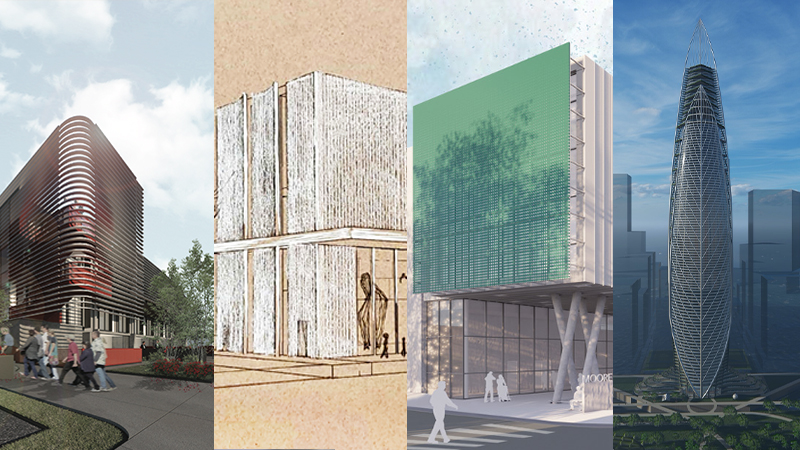Architecture Students Compete for 2020 AIA Triangle Scholarships


On January 27, 2020, 31 College of Design architecture students submitted their projects to the 2020 AIA Triangle Scholarship awards. The scholarships were separated into two Honor awards at $3,000 each, and two Merit awards at $1,000 each.
Projects were juried by the AIA Triangle Board of Directors, and competing designs were judged based on overall design excellence in the students’ fall studio projects. The AIA Triangle Scholarship program has raised over $60,000 over the last ten years in support of students studying architecture in the Triangle.
We asked each of the winning participants about the inspirations, concepts and impacts behind their projects. Check out their entries below:
Honor Award Winner – Daniel Garrett | Oberlin Hall
The inspiration for my project was the very realistic problem of the lack of affordable housing for NC State students. Both on campus housing, as well as off campus housing seem to be more of a fantasy and a chore than a home and a human right. The idea of these affordable housing projects making their way into the right hands and to take part in something that could possibly change someone’s life were my main inspirations.
The key factors of my project were to design every aspect with a purpose in order to maximize social interaction, productivity, flexibility and, most importantly, self-worth for the residents. By proposing a building with simple, yet durable and sustainable materials on the exterior, it allowed the interior spaces to move to the foreground of the project and provide the residents with a broad array of uses in order to establish a strong sense of community. When placed together, these ideas can begin to end the stigmatization of current affordable and supportive housing.
Honor Award Winner – Carmina Ferreras | The Patrick Dougherty Museum
Located in Downtown Raleigh, this space is designed for the local sculptor, Patrick Dougherty. The museum serves as a blank canvas for Dougherty’s large-scale stick sculptures.
Designed with double height spaces, a ‘peeling’ revealing facade, and a transparent cube, the structure magnetizes the community coming from either street. With a cafe, auditorium, gallery, and an interactive library, one can experience art with Dougherty. The facade and skylight play with light, forever changing the way Dougherty’s ephemeral pieces look like throughout the day. The structure becomes an iconic and resilient symbol in the downtown area serving as a precedent for future structures.
Merit Award Winner – Sondra Rogal | The Moore Square Craft Center
The Moore Square Craft Center is, first and foremost, a place for individuals seeking alternative mental health treatment that uses hands-on techniques to develop physical expressions of internal experiences and facilitate the healing process.
Designed to explore and encourage the foundation of relationships between the general community and individuals through art – carpentry, ceramics, textiles – this project begins at Moore Square with a covered outdoor plaza guiding the public into the main lobby. It then stems off into interactive gallery corridors that connect visitors and participants to a lecture hall, design studios, private therapy rooms, a cafe and a gift shop.
The Moore Square Craft Center is designed to be inviting to the Raleigh community, while still respecting the privacy of individuals working on their mental and emotional health. The most important influences on my design were the needs of the individual, the community around Moore Square and the greater Raleigh area.
Merit Award Winners (Shared) – James McManus and Alex Buck | The Alameda Leaf
The design for the Alameda Leaf took inspiration from nature, specifically the functionality of leaves. We applied this concept to our design – creating clean energy and developing strategies to replace the functions of environmentally unfriendly mechanical systems. Social interaction and integrating the cultural energy of a big city were also core components of this project.
The Alameda Leaf uses cutting edge technology to mimic the features of a leaf.
The veins create a logical method for triangulation, structure, as well as water and energy transport. The glass functions as the enclosure for the building and a transparent, thin-film, photovoltaic coating on the glass allows it to collect solar energy for electricity, which is then stored in the Central Park battery. Water collected on the building is stored in the central park cistern to be redistributed as needed for irrigation.
Three program functions – retail, office and residential – are combined to create a socially and environmentally sustainable structure.
To view images from the 2020 AIAT Scholarship reception, please visit the gallery here.
- Categories:






